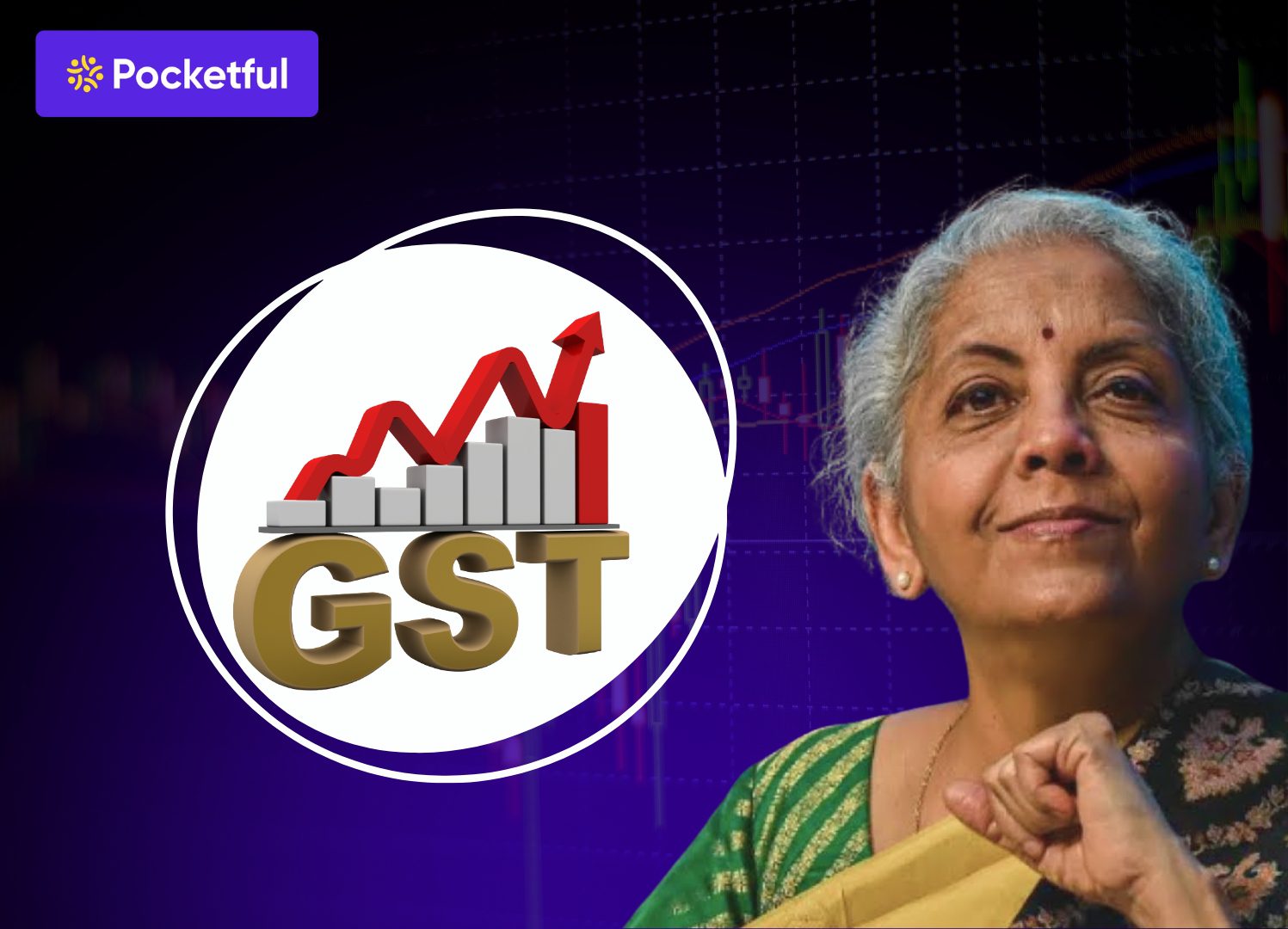In 2025, the role of private banks in the Indian banking sector has become stronger than ever. People are now liking them due to digital banking, better customer service and attractive products. If you want to know which is the best private bank in India or which banks have got a place in the top 10 private banks in India 2025, then this article is for you. Here we will explain in detail which private bank can prove to be the best according to your needs.
What is a Private Bank?
When we talk about private banks, it means banks that are owned by private companies or investors rather than the government. The specialty of these banks is that they focus on providing quick and modern facilities to the customers. Whether opening a new account, taking a loan or transferring money through a digital app their processes are generally considered to be fast and easy.
These banks are more competitive than government banks and are ahead in adopting new technology. For this reason, the popularity of private banks has increased in recent years and people have started preferring them for their everyday banking needs.
Top 10 Private Banks in India 2026
| S.no | Bank Name | Market Cap (₹ Cr, 2025 est) | Current Market Price | Founded | Headquarters |
|---|---|---|---|---|---|
| 1 | HDFC Bank Ltd | ₹ 14,53,319 | ₹ 946 | 1994 | Mumbai |
| 2 | ICICI Bank Ltd | ₹ 9,85,625 | ₹ 1,380 | 1994 | Mumbai |
| 3 | Kotak Mahindra Bank Ltd | ₹ 4,05,056 | ₹ 2,037 | 2003 | Mumbai |
| 4 | Axis Bank Ltd | ₹ 3,60,438 | ₹ 1,162 | 1993 | Mumbai |
| 5 | Yes Bank Ltd | ₹ 66,914 | ₹ 21.3 | 2003 | Mumbai |
| 6 | IndusInd Bank Ltd | ₹ 58,290 | ₹ 748 | 1994 | Mumbai |
| 7 | AU Small Finance Bank Ltd | ₹ 55,219 | ₹ 740 | 1996 | Jaipur |
| 8 | IDFC First Bank Ltd | ₹ 51,613 | ₹ 70.3 | 2015 | Mumbai |
| 9 | Federal Bank Ltd | ₹ 47,806 | ₹ 194 | 1931 | Aluva, Kerala |
| 10 | Bandhan Bank Ltd | ₹ 25,832 | ₹ 160 | 2015 | Kolkata |
Read Also: Best Bank Penny Stocks List
A brief overview of the Top 10 Private Banks in India is given below:
1. HDFC Bank Ltd
HDFC Bank is one of the largest private banks in India. It focuses on customer-first services: from easy bank account opening, digital banking apps, online transactions, home loans to wealth management. The bank has strengthened its mortgage portfolio, retail network and digital touch-points after the merger of HDFC Limited. The branch and ATM network is very large in terms of customer service, and the bank plans to open new branches frequently to reach out to small towns and rural areas. The current CEO and MD is Sashidhar Jagdishan, who is focusing the bank’s strategy on technology, digital experience and customer satisfaction.
| Description | Information |
|---|---|
| Number of branches | Around 9,499 branches |
| Services provided | Retail & commercial banking, loans, credit cards, wealth management, home & auto loans, digital banking, NRI Services , Forex. |
| Number of customers | Over 120 million customers , After Merger |
| CEO | Sashidhar Jagdishan |
Read more Information: HDFC Bank Case Study
2. ICICI Bank Ltd
ICICI Bank is a name that is well known in big cities as well as small towns. The bank does both retail + corporate banking well. They have made great strides in digital services – mobile app upgrades, net banking, UPI transactions, customer-friendly products. Their service network is large in both branches & ATM and they have also built an international presence. The bank focuses on customer experience, as styled by their CEO MD Sandeep Bakhshi – simple, reliable and technology-oriented.
| Description | Information |
|---|---|
| Number of branches | Around 7,066 branches |
| Services provided | Retail & corporate banking, credit cards, insurance, investment banking, wealth & asset management, NRI services |
| Number of customers | More than 30 million |
| CEO | Sandeep Bakhshi |
Read more Information: ICICI Bank Case Study
3. Kotak Mahindra Bank
Kotak Mahindra Bank has distinguished itself from larger banks by its strong focus on innovation and customer service. The company was initially founded in 1985 as Kotak Capital Management Finance Limited in 2003, it received a banking licence from the RBI making it the first non- banking financial companyin India. The bank is not limited to savings accounts and personal loans, but also operates in areas such as wealth management, investment banking, insurance, and premium banking. Kotak is significantly ahead in digital services such as mobile banking, faster account opening, and UPI integration for online transactions. Recently, the RBI imposed restrictions on certain digital customer acquisition activities, but Kotak has tried to get back on track after addressing these weaknesses.
| Description | Information |
|---|---|
| Number of branches | Around 1,869 branches |
| Services provided | Retail & corporate & Commercial banking, credit cards, wealth & investment management, insurance, digital banking , NRI & Forex Services. |
| Number of customers | More than 54 million |
| CEO | Ashok Vaswani |
Read more Information: Kotak Mahindra Bank
4. Axis Bank
Axis Bank is a bank that has expanded its branches from major cities to smaller towns. Its mission is not just to provide financial services, but to offer customers a comprehensive banking experience through robust digital tools, easy loan options, and features like international trade and forex services. The number of branches is constantly expanding, and new products are being rapidly implemented on digital platforms.
| Description | Information |
|---|---|
| Number of branches | Approximately 4,910 branches and extension counters |
| Services provided | Retail banking, corporate banking, investment banking, mortgages, credit cards, wealth management, NRI services, SME & Agri Banking. |
| Number of customers | More than 22.6 million |
| CEO | Amitabh Chaudhry |
Read more Information: Axis Bank Case Study
5. YES Bank
YES Bank was started in 2003 and has established its presence in all three sectors – retail, MSME and corporate banking. The last few years have been challenging for the bank, but now it is slowly on the path of recovery. Recently, the bank has further expanded its branch network and is focusing more on digital banking services. YES Bank is continuously introducing new products in credit cards, SME loans and digital payment solutions. The special identity of the bank is that it tries to provide tailor-made solutions to both mid-size businesses and individual customers. Its current MD & CEO is Prashant Kumar, whose tenure has been extended till October 2025 so that the bank can work further towards stability.
| Description | Information |
|---|---|
| Number of branches | 1,234 branches across India |
| Services provided | Retail & corporate banking, SME & MSME loans, credit cards, digital payments, wealth management, GST payment solutions |
| Number of customers | More than 2 million |
| CEO | Prashant Kumar |
Read more Information: Yes Bank Case Study
6. IndusInd Bank
IndusInd Bank was founded in 1994 and has since established itself in the banking sector. It primarily serves both retail and corporate customers. Its specialty is its tailored services for affluent and HNI (High Net Worth Individuals) customers, such as investment advisory, wealth management, and priority banking. It also has a strong presence in rural banking and vehicle finance. IndusInd Bank is also continuously investing in digital banking solutions to provide a seamless customer experience.
| Description | Information |
|---|---|
| Number of branches | Approximately 3,110 branches and extension counters |
| Services provided | Retail & corporate banking, wealth management, vehicle finance, microfinance, NRI banking, digital banking |
| Number of customers | More than 41 million |
| CEO | Rajiv Anand |
Read more Information: IndusInd Bank Case Study
7. AU Small Finance Bank Ltd
AU Small Finance Bank was founded in Jaipur and received its Small Finance Bank license in 2017. Initially, its focus was on small businesses and rural customers, but gradually, the bank has established its presence across the country. AU Bank’s biggest differentiator is its customer-centric approach whether it’s video banking, WhatsApp banking, or the “AU 0101” mobile app, it has significantly expanded its digital footprint. In 2025, the RBI granted it in-principle approval for universal bank status, allowing it to offer services on a broader scale. Its branches are no longer limited to major cities, but are rapidly expanding into smaller towns and semi-urban areas.
| Description | Information |
|---|---|
| Number of branches | 2,500+ banking touchpoints across 21 states |
| Services provided | Savings & current accounts, personal & business loans, credit cards, microfinance, insurance, investment products, digital banking (AU 0101 app, video & WhatsApp banking) |
| Number of customers | More than 1.16 crore customers |
| CEO | Sanjay Agarwal |
Read more Information: AU Small Finance Bank Case Study
8. IDFC First Bank Ltd
IDFC First Bank was launched in 2018 after the merger of Capital First and IDFC Bank. Within a short time, the bank has gained a strong reputation for its “customer-first” model. It offers attractive interest rates on savings accounts, digital banking features, and customer-friendly products. The bank’s focus is on serving retail customers, MSMEs, and small businesses. With products such as credit cards (especially co-branded ones), personal loans, and digital UPI payments, IDFC First has rapidly gained the trust of youth and middle-class customers.
| Description | Information |
|---|---|
| Number of branches | 1,016+ banking touchpoints across 21 states |
| Services provided | Savings & current accounts, personal & business loans, credit cards, MSME lending, microfinance, digital banking (UPI, doorstep banking, GST payments) |
| Number of customers | More than 35 million customers |
| CEO | V. Vaidyanathan |
9. Federal Bank
Federal Bank, founded in 1931 and headquartered in Aluva, Kerala, is one of India’s oldest and most trusted private banks. It is particularly known for its NRI banking services, with a large number of Indians working in Gulf countries choosing Federal Bank. It also has a strong presence in retail and SME banking and continues to innovate with digital banking services. Its mobile app and UPI-based services are very popular with customers.
| Description | Information |
|---|---|
| Number of branches | 1,588+ branches across India |
| Services provided | Retail & corporate banking, NRI services, SME finance, digital banking, investment & insurance products |
| Number of customers | More than 18.2 million |
| CEO | Manian KVS |
10. Bandhan Bank
Bandhan Bank was launched in 2015, but its roots are rooted in microfinance. The bank’s primary focus is to bring banking to areas often underserved by traditional large banks. Bandhan Bank’s strong network in rural and semi-urban areas has created a distinct identity for itself. It offers more than just savings accounts and loans, but now also offers credit cards, insurance, and investment products. The bank is continuously working towards financial inclusion and recently expanded its reach by opening branches in new states.
| Description | Information |
|---|---|
| Number of branches | 6,350 banking outlets across India |
| Services provided | Savings & current accounts, fixed deposits, personal & home loans, credit cards, insurance, mutual funds, microfinance |
| Number of customers | More than 3.44 crore |
| CEO | Partha Pratim Sengupta |
Read more Information: Bandhan Bank Case Study
Key Performance Indicators (KPIs)
The key performance metrics of stocks of 10 private banks in India
| Bank Name | Operating Margin (%) | Net Profit Margin (%) | ROE (%) | ROCE (%) | P/E |
|---|---|---|---|---|---|
| HDFC Bank Ltd | 25.58 | 21.83 | 13.56 | 2.62 | 9.85 |
| ICICI Bank Ltd | 26.47 | 29.20 | 16.45 | 3.13 | 18.62 |
| Kotak Mahindra Bank Ltd | 27.91 | 33.41 | 14.04 | 3.93 | 19.51 |
| Axis Bank Ltd | 33.11 | 22.07 | 14.98 | 2.84 | 12.15 |
| Yes Bank Ltd | 16.22 | 7.91 | 5.11 | 1.06 | 21.37 |
| IndusInd Bank Ltd | 9.63 | 5.29 | 3.99 | 2.01 | 19.65 |
| AU Small Finance Bank Ltd | 19.98 | 13.10 | 12.26 | 2.99 | 18.88 |
| IDFC First Bank Ltd | 5.67 | 4.08 | 3.90 | 2.24 | 26.94 |
| Federal Bank Ltd | 29.17 | 14.94 | 12.04 | 1.85 | 11.35 |
| Bandhan Bank Ltd | 18.98 | 12.50 | 11.15 | 3.95 | 8.58 |
Read Also: Best Banks for Savings Accounts in India
How to Choose the Right Private Bank: A Customer vs. Investor Perspective
A. For Customers Seeking Banking Services:
1. Identifying Needs : Consider what you need from a bank just a savings account or a credit card, personal loan, and wealth services as well. Your priorities determine the right bank.
2. Interest Rates and Fees : Every bank charges different interest rates and charges. Whether it’s savings or loan EMIs, pay attention to hidden charges. These small differences can make a big difference in the long run.
3. Branches and Digital Facilities : Check if a branch and ATM are available in your city or town. Also, if the mobile app and net banking are running smoothly.
4. Customer Experience : Check app ratings, online reviews, and customer care responses. A good bank is one that resolves your issues quickly and promptly.
5. Trustworthiness : Pay attention to RBI compliance, track record, and market reputation. A safe bank is the right place for your money in the long run.
B. For investors investing in the banking sector
1. Financial Strength : Look at market cap, capital adequacy ratio, and loan book growth. These indicate how stable a bank is operating.
2. Profitability : Look at Net Interest Margin (NIM), Return on Assets (RoA), and cost-to-income ratio. These metrics indicate long-term profitability.
3. Asset Quality : Analyze NPA levels and provisioning policy. Low NPAs indicate strong risk management.
4. Growth Strategy : Consider which new areas the bank is expanding into (digital banking, SME finance, NRI services). Growth strategy determines future returns.
5. Management and Governance : It is important to trust the credibility and governance culture of the CEO and top management. Good leadership increases investor confidence.
Read Also: Best Banking Stocks in India
Conclusion
Private banking in India is constantly changing, and each bank has its own unique identity. Digital banking and customer service are important to some, while interest rates and product variety are important to others. For investors, this sector is also considered a reliable option in the long run. The right choice always depends on your needs and priorities.
| S.NO. | Check Out These Interesting Posts You Might Enjoy! |
|---|---|
| 1 | Small Finance Bank Share List in India |
| 2 | Best NBFC Stocks List in India |
| 3 | Top AMCs in India |
| 4 | List of Government Bank Stocks/Share in India |
| 5 | Top 10 Best Credit Cards in India |
Frequently Asked Questions (FAQs)
Which is the best private bank in India in 2025?
Depending on your needs, big names like HDFC and ICICI are trustworthy.
Are private banks safe for deposits?
Yes, all are regulated by the RBI, so they are safe.
Which private bank is best for digital banking?
HDFC, ICICI, and Axis are ahead in digital services.
Can I switch my salary account to another private bank?
Yes, you can do it easily by informing your employer.
Which private bank is good for rural areas?
Bandhan and Federal are strong in rural and semi-urban areas.










